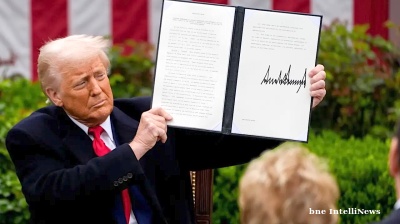Funding for films increased dramatically in several small countries in Central and Southeast Europe including Croatia, Latvia and Macedonia between 2010 and 2014, a report from the European Audiovisual Observatory shows.
Countries in the region have become popular filming locations, thanks to their combination of low labour costs and unspoilt scenery. Several are now seeking to develop their domestic film industries with varying degrees of success, as well as providing incentives for international productions.
Latvia saw the biggest increase of funding in 2010-2014 - 192%, followed by Luxembourg with 150% and Macedonia with 114%, according to the report sent by the European Audivisual Observatory to bne IntelliNews on August 4. In fourth place was Croatia with 100%.
In 2013, Latvia became the first of the Baltic states to launch national co-financing grants in a bid to attract foreign productions, according to Hollywood Reporter. Two years later, the government expanded its cash rebate scheme and hiked film funding by $8.5mn.
The country was one of the locations for the filming of the new BBC adaptation of War and Peace, along with neighbouring Lithuania.
At the beginning of 2014, Macedonia introduced its Production Incentive Programme, which provides a 20% cash rebate on gross expenditures for projects with expenditures of at least €100,000 made in Macedonia.
The Macedonian Film Agency says on its website that 11 films were released in 2014-2015. They include “To the hilt” (Do Balcak) an action-adventure western style movie, written by Goran Stefanovski, brother of renowned musician Vlatko Stefanovski. The film was released in 2014 with the action taking place after the uprising against Ottoman rule in 1903 and is the about paradoxes and absurdities of Macedonian history. The scenes were shot in Skopje, Ohrid, Bitola, Prilep and Stip. The film was the Macedonian entry for best foreign language film at the 87th Academy Awards but was not nominated.
Another film, Lazar, released in 2015, is about smuggling illegal migrants to Europe. A further five films are currently in the post-production stage, three are in the production phase while 13 are upcoming projects.
In Croatia, Cash Rebate, introduced in 2012, is one of the newest systems in Europe and has been remarkably successful, having helped attract productions such as Game of Thrones.
According to the report, 21 countries experienced growth in 2014 compared to their levels of funding in 2010.
Contributions from the national or federal government as a share of total income were close to 100% in Macedonia, and also in Bulgaria, Cyprus and Lithuania.
Across the continent, however, contributions from the national or federal government accounted for just 32% of the resources available, a yearly average of €757.6mn. Only three of the 33 countries in the sample did not include the support of their national or federal governments among the sources of financing for film and audiovisual funds. In 20 of the remaining 30 countries, income from this source increased in 2014 compared to 2010, while it dropped in the remaining 10 countries.
In total, a yearly average of €2.53bn went to the 214 funds in a sample including 33 countries between 2010 and 2014 (Albania and Russia could not be tracked for this indicator).
The three main sources of income in Europe at the national and sub-national levels combined were contributions from the national or federal government (32%) followed by levies on broadcasters (31%) and contributions from regional governments (13%). Only in four countries were contributions from regional and local government above 25% of the overall income, including Latvia (28.6%).
Data
_0_1752583592.png)
Slovak inflation accelerates further to 4.3% y/y in June, highest since 2023
Growth of consumer price indices (inflation) accelerated further to 4.3 year on year, and by 0.2% month on month. This is up on the 4.1% y/y acceleration registered in May, and the highest inflation level since December 2023.

Poland’s CPI picks up growth rate slightly to 4.1% y/y in June
Poland’s consumer price index rose 4.1% year on year in June (chart), picking up from 4% y/y the preceding month, data published by the national statistics office GUS on July 15 showed.
_1752535241.png)
Russia’s inflation slows to 9.4% in June
Russian consumer prices rose 0.2% month on month and 9.4% year on year in June, in line with preliminary weekly data, according to the latest RosStat report.

Romania’s inflation rises to 5.66% in June ahead of anticipated price pressures
Electricity market liberalisation and a VAT hike in August are expected to put upward pressure on prices.




